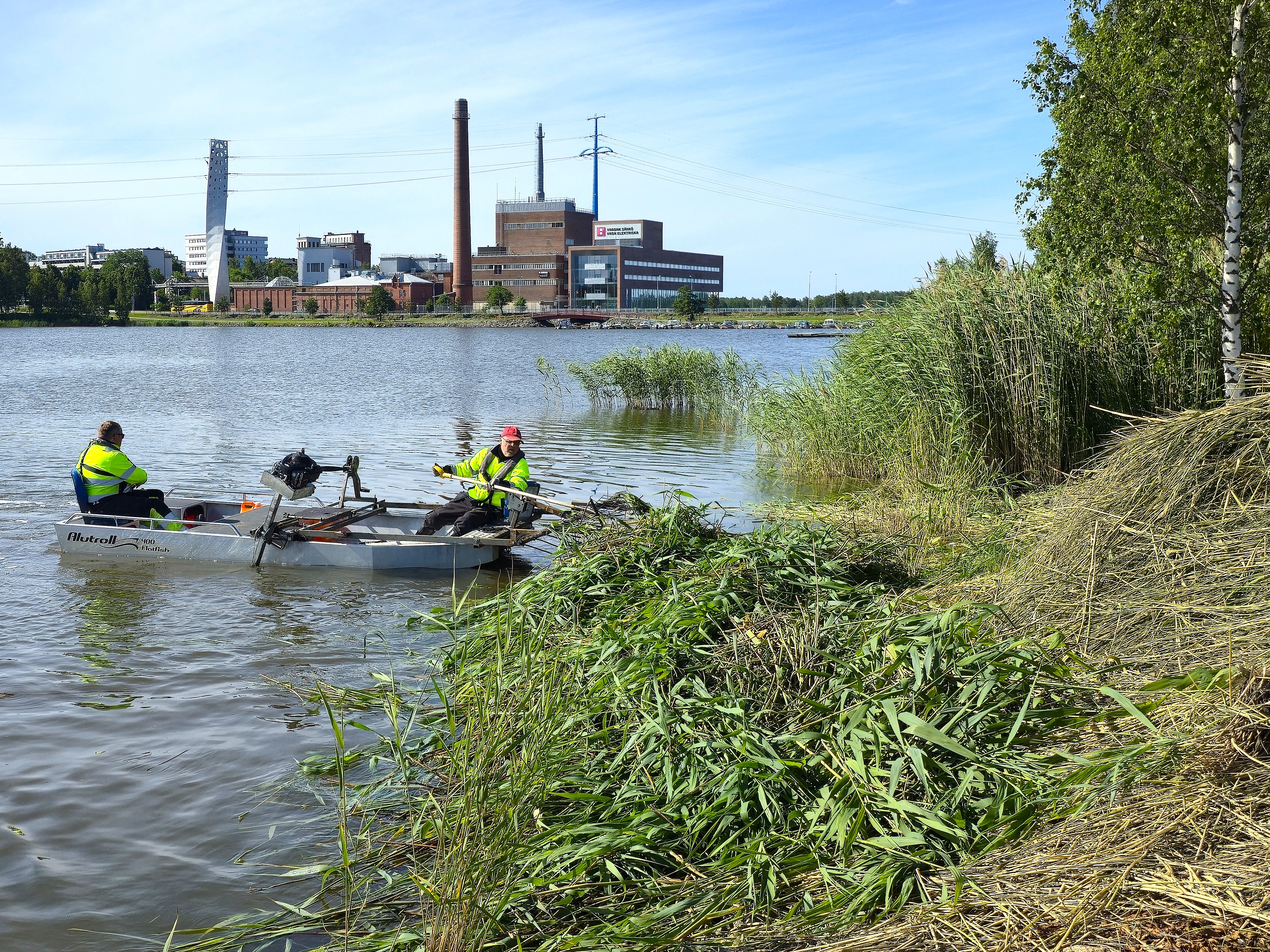
Article categories: Archive News
Cleaning up Vaasa’s shoreline reeds – troublesome common reed to be put to good use
Published: 31.7.2025
The City of Vaasa is now in its third year of cutting common reed in the Southern City Bay. The cutting helps improve water quality, preserve the landscape and biodiversity, and provide raw material for biogas production. The cutting will continue until the end of October.
Over the summer, reed has been cut in areas such as the Old Vaasa Canal, Suvilahti, Kustaanlinna and Onkilahti. From August until the end of October, the work will focus on the nature reserve at the southern end of the Southern City Bay, once the bird nesting season has ended.
– Vaasa’s Southern City Bay has become heavily overgrown with reeds. Cutting back the reeds helps improve water circulation, says project coordinator Simo Marttila.
Common reed is primarily cut in the Southern City Bay, which is one of Vaasa’s most important recreational areas. The effects of eutrophication and land uplift are also most clearly visible there. Cutting the reeds helps improve the condition of the waterway and keeps the landscape attractive.
Cutting reduces eutrophication and supplies raw material for biogas
Due to land uplift, the shoreline recedes, allowing dense reed beds to rapidly spread. This causes the waterbody to become more nutrient-rich, increasing the risk of blue-green algae blooms, among other things. When reeds decompose in the water, they can cause local oxygen depletion, which may lead to fish kills.
In Vaasa, common reed is removed by cutting rather than dredging, as this method is more cost-effective. Additionally, the common reed collected by cutting is put to good use: it is shredded and digested at Stormossen to produce biogas, which is used to fuel Lifti buses, among other things.
The City of Vaasa’s long-term goal is to increase the use of local raw materials in biogas production. The project supports the city’s goal of becoming carbon neutral by the end of the 2020s.

Next steps are being explored
At present, the city is exploring the best methods for cutting common reed. Equipment needs to be improved, as the volume of cutting must increase to make the work cost-effective. However, land uplift and shallow shores present particular local challenges.
– Our current flat-bottomed boat cannot get close to the shore in shallow water, so not all potential cutting sites can be reached with this equipment, says Marttila and points out that student Jami-Matti Aho is contributing to the project by exploring machinery investment options as part of his thesis research.
– We are also working to improve the transport chain from the cutting sites to Stormossen and assessing how much common reed can be supplied for biogas production. Moreover, we are also looking into effective ensilage methods, Marttila adds.
The current project runs until 31 October 2025, after which the city’s decision-makers will assess whether to proceed with further investments in utilising common reed in Vaasa.
Vaasa has been named a European Green Leaf City for 2026. The European Commission awards this recognition annually to cities that promote sustainable development and work systematically for the environment and climate.
